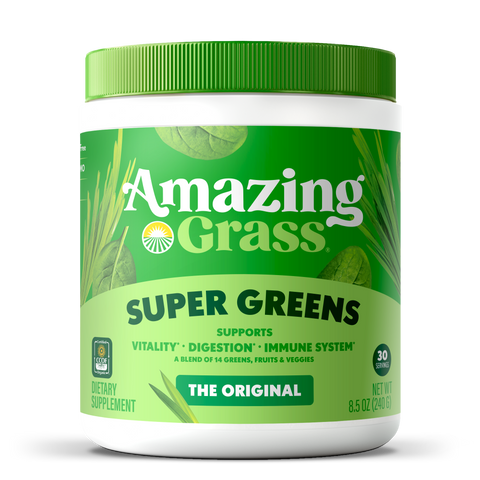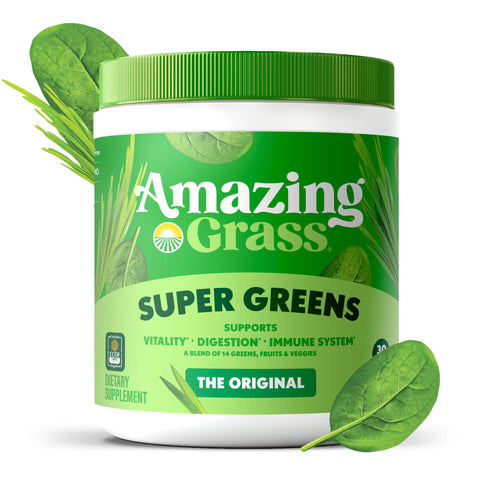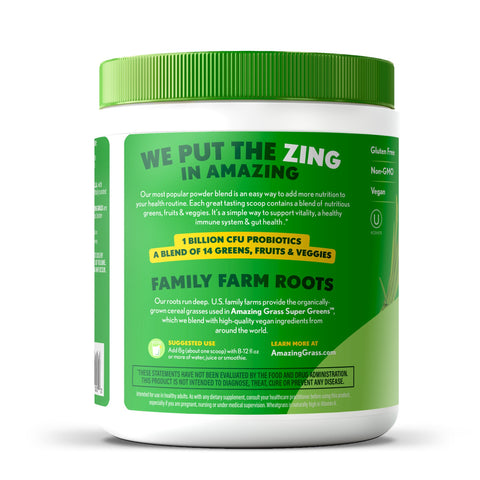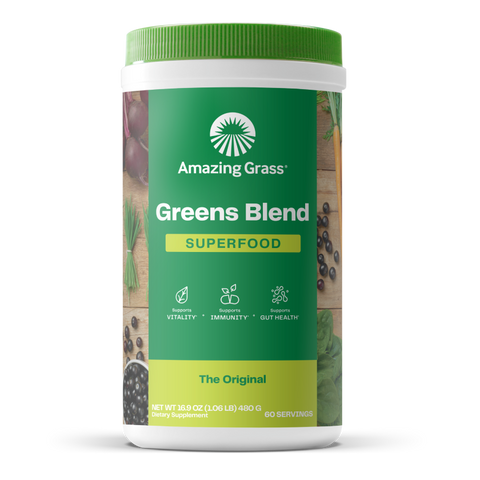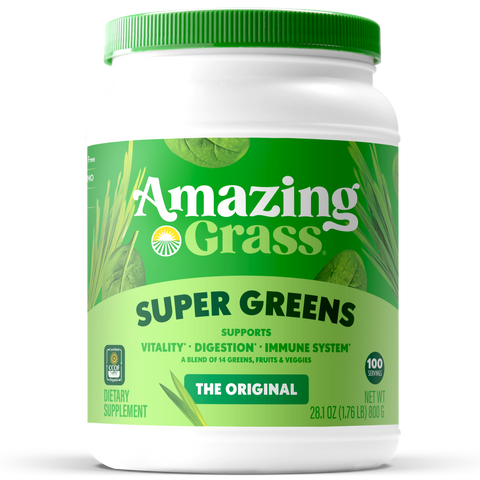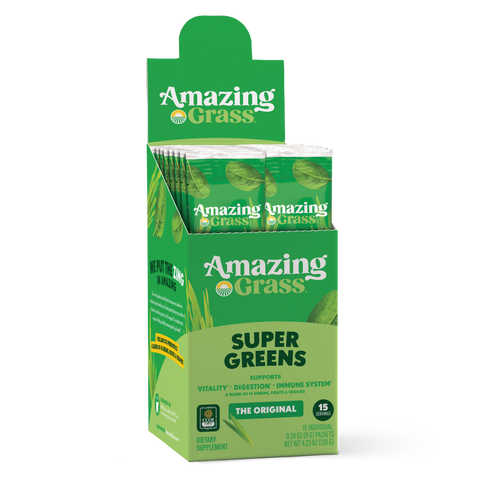You’ve got choices when it comes to gettin' your greens. And of course, everyone wants the most nutrient-dense
super greens they can find. What makes Amazing Grass the
best choice?
Simple. Our process. See, we’re obsessively thoughtful about all the little details, right from the beginning. We’ve organically grown grasses on our family farm in Kansas for over 3 generations. In that time, we perfected a simple process: slow growth, deep roots, mineral-rich soil, and harvesting at peak nutrition. Our cereal grasses, which include wheat grass, barley grass and alfalfa grass (kale to come – yes, be excited!) are planted on our family farm in Kansas around August/September, and grown through a cold winter. Grass needs time to grow. We’re talking slow growth, so 200 days later, we harvest. We only harvest once a year at the crops’ nutritional peak, prior to the jointing stage. Our roots run deep. You may have seen this phrase on our packaging and may be thinking to yourself, ‘Cool. All roots run deep, right?’ or possibly, ‘I don’t know why that matters. Don’t care. Sounds like Marketing mumbo jumbo.” Here’s what we mean though… Growing our grasses through a cold winter forces the roots to grow deeper, away from the frost line, in order to soak up maximum nutrients from the soil. Our grasses quite literally dig deep to survive. Consequently, deeper roots yield a substantially more nutrient-dense grass; greener in color too. Just like people, crops also require real time and work to grow into something substantial. We are such nature-copy-cats.
Time to harvest, so who makes the cut?
Just the tips. Why? Because grass blade tips are where it’s at – this is where most of the nutrients like to hang out. Of the grass blades we cut, 85% is digestible plant nutrition, and about 15% indigestible plant fiber, which helps promote a healthy digestive tract. Cutting just the tips means producing a lower yield (less product) but higher quality (more nutrient-dense). After all that, how do our grasses stack up against others? Kind of like comparing spinach to ice-berg lettuce.






